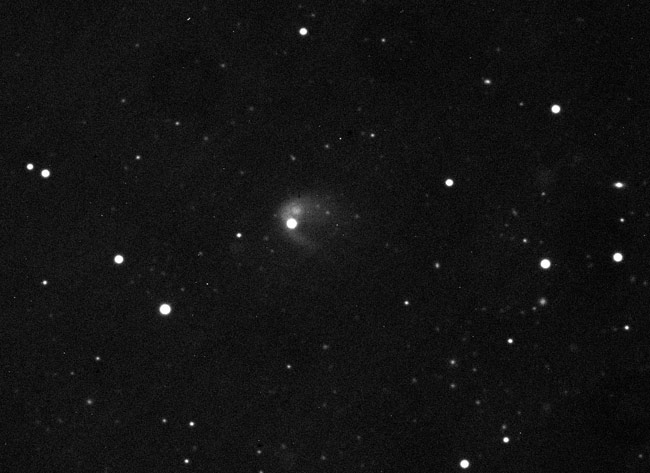Comet or Asteroid? Big Space Rock Has Identity Crisis

A huge asteroid discovered more than 100 years ago may not be an asteroid at all, but a dormant comet that is just now coming back to life, according to new observations.
The object, known as 596 Scheila, is about 70 miles (113 kilometers) wide and has a faint, wispy tail that suggests it may actually be a comet, researchers said. If that's the case, then 596 Scheila would be only the sixth known comet to reside in the main asteroid belt, a vast region of space rocks that lies between the orbits of Mars and Jupiter. [Photo of 596 Scheila]
The asteroid-turned-comet discovery was somewhat serendipitous. On the night of Dec. 11, astronomer Steve Larson, a scientist with the Catalina Sky Survey in Tucson, Ariz., was searching for potentially hazardous asteroids when he came across an object with a bright core and a faint tail.
Four images taken in a span of 30 minutes revealed the object was moving relative to the background stars, researchers said.
"Its brightness of a total magnitude of 13.4 visual, which is about 900 times fainter than the faintest star you can see in a clear, dark sky, led me to suspect that it was a known comet, but I checked the comet database and got nothing," Larson said in a statement.
Further investigation revealed that the object was actually 596 Scheila, which astronomers first discovered in 1906. Scheila tumbles through space alongside thousands of similar objects in the main asteroid belt, but orbits slightly out of the ecliptic plane in which most planets and asteroids travel, researchers said.
Previous studies of 596 Scheila's color have suggested that it is composed of primitive carbonaceous material left over from the formation of the solar system and might be an extinct or dormant comet. These bodies have already ejected most of their volatile ices and therefore have lost their cometary tails. Dormant comets retain some subsurface volatiles and may start outgassing once again as they near the sun.
Get the Space.com Newsletter
Breaking space news, the latest updates on rocket launches, skywatching events and more!
"Scheila, along with several other bodies in the past few years, have created a new class of solar system objects: main-belt comets," Bill Cooke, of NASA's Meteoroid Environment Office at Marshall Space Flight Center, wrote in a blog post after Larson's find. "These bodies are an anomaly and a mystery since an object this close to the sun should have had its ices vaporized away."
After Larson reported his discovery, many other astronomers pointed their telescopes at 596 Scheila to determine if its tail consists of ice and gases — as would be expected for a comet — or if it is merely dust left behind from a collision with another asteroid.
Preliminary findings of the outburst show that 596 Scheila's tail is composed of dust, but more observations will be needed to understand just what is happening with the object, researchers said.
Join our Space Forums to keep talking space on the latest missions, night sky and more! And if you have a news tip, correction or comment, let us know at: community@space.com.

Space.com is the premier source of space exploration, innovation and astronomy news, chronicling (and celebrating) humanity's ongoing expansion across the final frontier. Originally founded in 1999, Space.com is, and always has been, the passion of writers and editors who are space fans and also trained journalists. Our current news team consists of Editor-in-Chief Tariq Malik; Editor Hanneke Weitering, Senior Space Writer Mike Wall; Senior Writer Meghan Bartels; Senior Writer Chelsea Gohd, Senior Writer Tereza Pultarova and Staff Writer Alexander Cox, focusing on e-commerce. Senior Producer Steve Spaleta oversees our space videos, with Diana Whitcroft as our Social Media Editor.









